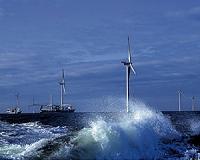 |
Cologne, Germany (SPX) Aug 19, 2010 The German Aerospace Center (Deutsches Zentrum fur Luft- und Raumfahrt; DLR) is developing the Antares H3 in cooperation with Lange Research Aircraft GmbH. The Antares H3 is a higher-performance successor of the Antares DLR-H2, the world's first piloted aircraft capable of performing a complete flight powered by fuel cells alone. The Antares H3 will set new range and endurance benchmarks. The project started in August 2010 and the first flight is scheduled to take place in 2011. Technically, the new aircraft is based upon the Antares 20E as well as the fuel-cell powered Antares DLR-H2. The Lange Aviation Antares 20E is a self-launching motorised glider with battery-powered electrical propulsion, which has been in series production since 2004. The fuel cells, which replace the batteries, use hydrogen as fuel. The hydrogen is transformed into electrical energy in a direct and non-combustive electrochemical reaction with oxygen taken from the surrounding air. The only reaction product is water. The aircraft flies carbon dioxide-neutral, if the hydrogen is created using energy from a renewable source.
6000-kilometer range using fuel cells For the Antares H2, these values were 700 kilometres and 5 hours respectively. The aircraft will have a wingspan of 23 metres, a maximum takeoff weight of 1.25 metric tons, and it will carry payloads of up to 200 kilograms. The aircraft will use four external pods to house the fuel cells and fuel. "The fuel-cell powered Antares flies carbon dioxide-neutral, and emits significantly less noise than other comparable motorised gliders. It represents a new milestone in the area of efficient, emission-free energy transformation," said Dr Josef Kallo, Head of Electrochemical Systems at DLR's Institute of Technical Thermodynamics (Institut fur Technische Thermodynamik). "We will continue to expand our partnership with Lange Research Aircraft over the next three years," Dr Kallo added. The institute, which is located in Stuttgart, will assemble the modular fuel-cell system and perform the technical evaluation. Lange Research Aircraft GmbH is responsible for the overall integration and for operating the aircraft. The project is being supported by the German Federal Ministry of Transport, Building and Urban Development (Bundesministerium fur Verkehr, Bau und Stadtentwicklung; BMVBS) in the framework of a national innovation programme for hydrogen and fuel cell technology (Nationale Innovationsprogramm Wasserstoff- und Brennstoffzellentechnologie). "The efficiency, dynamics and endurance of Antares set new benchmarks in the area of aviation systems. This opens up completely new applications," explained Axel Lange, CEO of Lange Research Aircraft GmbH. The optimised flight qualities and the simple handling will allow the Antares to fly both piloted and, at a later point in the development, unmanned. As an unmanned aerial vehicle, the Antares H3 could perform numerous tasks, for example, Earth observation and surveying. As a first cooperative step towards a commercial product, the developers at Lange and DLR have set their sights on the maiden flight, which is planned for 2011.
The project partners Lange Research Aircraft GmbH is a high-tech enterprise which cooperates closely with Lange Aviation GmbH. Lange Aviation GmbH was founded in 1996, and employs more than 30 people. The company develops, builds and distributes both motorised and conventional gliders. In 2009, the company, in cooperation with DLR, developed the Antares DLR-H2, the world's first aircraft capable of performing a complete flight on fuel-cell power alone.
Share This Article With Planet Earth
Related Links German Aerospace Center Powering The World in the 21st Century at Energy-Daily.com
 Which Type Of Electricity Generation Has The Least Impact On Climate?
Which Type Of Electricity Generation Has The Least Impact On Climate?Stuttgart, Germany (SPX) Aug 17, 2010 Coal-fired power stations burn lignite or, for the most part, coal imported from overseas. Solar cells need crystalline silicon that first needs to be extracted from quartz, an energy-intensive process. Therefore, when examining the climate compatibility of power generating plants, it makes sense to not restrict the analysis just to the operation of the plant. Instead, the total energy req ... read more |
|
| The content herein, unless otherwise known to be public domain, are Copyright 1995-2010 - SpaceDaily. AFP and UPI Wire Stories are copyright Agence France-Presse and United Press International. ESA Portal Reports are copyright European Space Agency. All NASA sourced material is public domain. Additional copyrights may apply in whole or part to other bona fide parties. Advertising does not imply endorsement,agreement or approval of any opinions, statements or information provided by SpaceDaily on any Web page published or hosted by SpaceDaily. Privacy Statement |